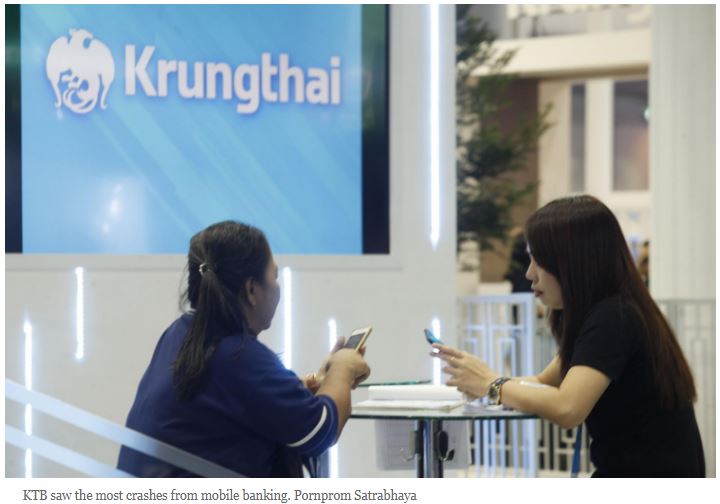Thailand: Q3 sees dip in bank transaction crashes
The frequency of banking transaction crashes fell sharply in the third quarter after the central bank imposed a measure to publicly disclose them, according to Bank of Thailand data.
There were 12 glitches from July to September, compared with 32 in the previous quarter, which was the first time the central bank publicised names.
Mobile banking was at the centre of the transaction glitches in the third quarter, happening eight times, followed by ATM and cash deposit machines (CDMs), occurring three times, and the branch channel once.
In the second quarter, 21 crashes happened from mobile banking, eight from ATMs and CDMs, six from internet banking and three from the branch channel.
Data was collected from 22 commercial banks.
Krungthai Bank (KTB) had the most crashes, with three for its mobile banking and one at ATMs and CDMs from July to September.
But the frequency of KTB’s transaction glitches was down from 11 times, of which seven were for mobile banking, two for internet banking, one at ATMs/CDMs and another at the branch channel.
Two financial institutions saw more transaction crashes in the third quarter. Kiatnakin Bank faced a glitch for the three months through September after zero in the preceding quarter, while CIMB Thai Bank had three crashes, up from twice in the prior period.
Siritida Panomwon Na Ayudhya, assistant governor for payment systems policy and financial technology at the Bank of Thailand, said mobile banking still suffered more crashes than any other channel in the third quarter, in line with an upswing in usage.
The influx of transactions during peak periods is the main cause of the crashes, so banks need to better manage traffic to alleviate the problems.
Although the final quarter is normally the peak season for banking transactions, the central bank expects less-frequent crashes in the quarter because of banks’ infrastructure development.
Meanwhile, Ms Siritida said three non-bank companies are applying to test out peer-to-peer (P2P) lending in the central bank’s regulatory sandbox.
The experiment is expected to begin early next year.
Under the regulatory sandbox, the central bank requires potential P2P loan service providers to take into account both financial data and the behaviour of borrowers for loan analysis.
Customers’ financial discipline will be an important behaviour that determines if borrowers will gain loan approval, Ms Siritida said.
“P2P lending will open opportunities to individual borrowers or small-business owners, who require small-ticket loans with shorter maturity, to more easily access financial sources,” she said.
Source: https://www.bangkokpost.com/business/1822064/q3-sees-dip-in-bank-transaction-crashes


 English
English




